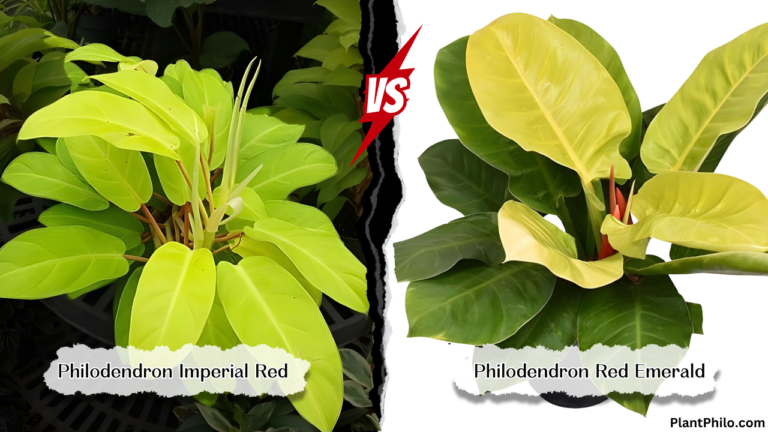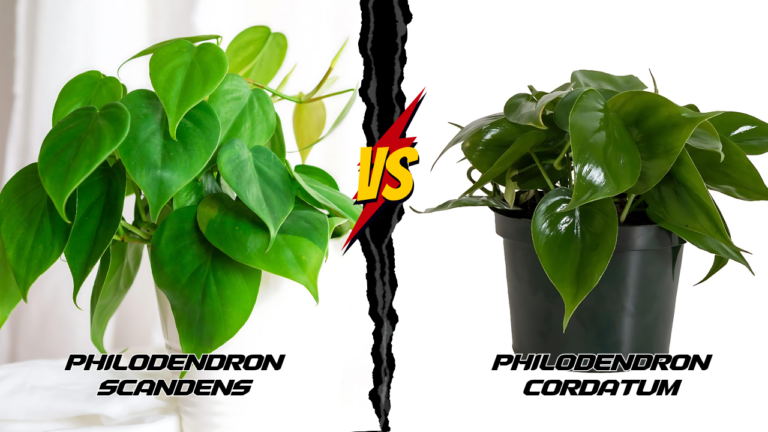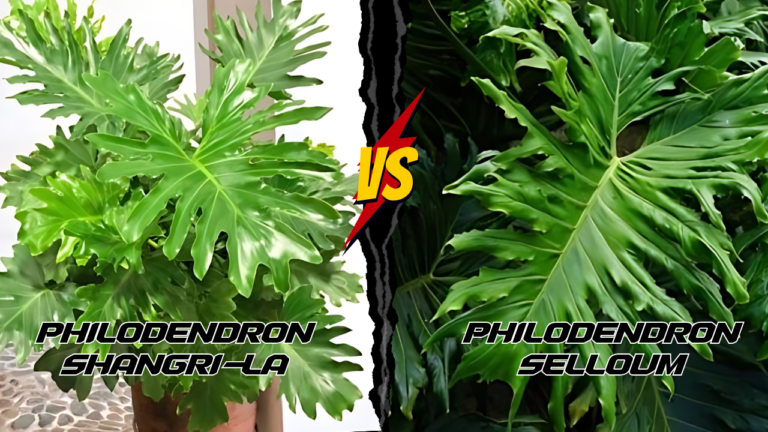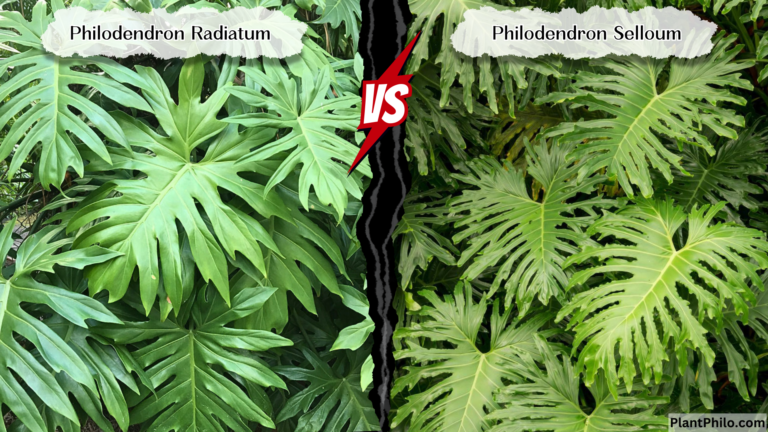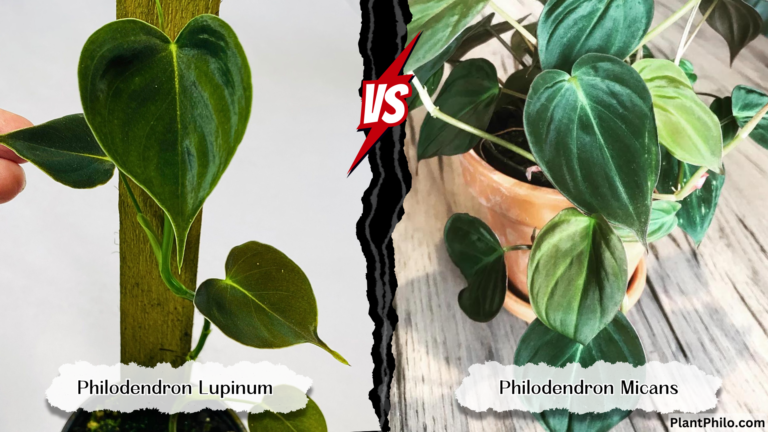Comparison Between Philodendron Shangri-La and Xanadu: A Side-by-Side Comparison
Are those leaves whispering secrets of hidden differences? The Philodendron Shangri-La and Xanadu may appear nearly identical at first glance, but a closer look reveals a fascinating tale of contrasting textures, growth habits, and care needs. Embark on a journey of discovery as we decode these subtle distinctions, guiding you to the perfect tropical paradise for your home.
Philodendrons are popular houseplants known for their lush foliage and easy care. Among the many varieties, Philodendron Shangri-La and Philodendron Xanadu are often celebrated for their unique appearances and growth habits. These two plants can be confusing due to their similarities, but understanding their differences can help you choose the right one for your home.
Philodendron Shangri-La, introduced in 2021, is a compact, self-heading variety with deeply lobed leaves. Its smaller size, typically reaching 2-3 feet in height and 3-4 feet in width, makes it ideal for limited spaces. On the other hand, Philodendron Xanadu, popular since the 1980s, features wider lobes and a fuller appearance. This plant can grow up to 4 feet tall and wide, making it a striking centerpiece.
Both plants thrive in bright, indirect light and prefer higher humidity levels, mimicking their natural tropical habitat. They share similar care requirements, needing well-draining soil and regular watering once the top inch of soil dries out. By comparing their growth habits and visual appeal, you can determine which Philodendron best suits your aesthetic and spatial needs, as well as your ability to provide the necessary care.
Key Takeaways
- Philodendron Shangri-La is compact and self-heading.
- Philodendron Xanadu features wider lobes and grows larger.
- Both prefer bright, indirect light and higher humidity.
Background and Origins
Both Philodendron Shangri-La and Philodendron Xanadu are beloved houseplants that are often confused due to their similar appearances. Understanding their backgrounds and origins can help you distinguish between these two plants and select the best one for your home.
Philodendron Shangri-La
Philodendron Shangri-La was introduced in 2021 by Ball Ingenuity. It’s a cultivated variety of Philodendron bipinnatifidum. This plant is known for its compact, self-heading growth habit and deeply lobed leaves. Its leaves are typically smaller, making it a great choice for indoor spaces.
The plant belongs to the Araceae family and thrives in tropical environments. Shangri-La’s deep green leaves have narrow, pointed segments, giving them a lacy, delicate look. This variety remains relatively small, reaching only 2-3 feet tall, which makes it ideal for smaller rooms or spaces where a low-maintenance, attractive plant is desired.
Philodendron Xanadu
Philodendron Xanadu, a patented cultivar of Philodendron bipinnatifidum, has been popular since the 1980s. Known for its lush, multi-lobed leaves and upright growth habit, Xanadu can grow larger than Shangri-La, reaching up to 4 feet tall. Its leaves are broader and bushier, providing a fuller appearance.
Xanadu also belongs to the Araceae family and thrives best in tropical conditions. This plant has an open growth habit, with larger leaves that can grow up to 24-36 inches long. The new leaves often emerge with a bronze or reddish tint before turning green as they mature. Philodendron Xanadu’s longer stems and leaf stalks contribute to its more spread-out form, making it suitable for bigger spaces.
Visual Comparison: Leaves
Philodendron Shangri-La and Xanadu have distinct visual differences in their leaves. Key aspects include shape, size, texture, color, and how new leaves emerge.
| Feature | Philodendron Shangri-La | Philodendron Xanadu |
| Origins | Cultivar of P. bipinnatifidum (introduced 2021) | Cultivar of P. bipinnatifidum (popular since 1980s) |
| Growth Habit | Compact, self-heading | Open, upright |
| Leaf Shape | Deeply lobed, narrow segments | Wider lobes, broader segments |
| Leaf Size | Smaller (12-18 inches) | Larger (24-36 inches) |
| Leaf Texture | Smooth, glossy | Smooth, glossy |
| Leaf Color | Rich green, slightly lighter | Rich green |
| New Leaf Color | Lighter green, darkens with age | Bronze/red, turns green |
| Petiole Length | Shorter | Longer |
| Mature Size | 2-3 feet tall and wide | 4 feet tall and wide |
| Ideal Support | May not need support | May benefit from support |
| Price | Slightly higher | Slightly lower |
Shape
Philodendron Shangri-La leaves are deeply lobed with narrow, pointed segments. These segments give the plant a lacy and delicate appearance. In contrast, Philodendron Xanadu leaves have wider lobes and broader segments.
This results in a bushier and fuller appearance. The shape of each plant’s leaves contributes to its overall visual impact and can help you distinguish between the two.
Size
The size of the leaves is another noticeable difference. Philodendron Shangri-La’s leaves typically reach about 12-18 inches in length. They are more modest in size, which fits their compact growth habit.
On the other hand, Philodendron Xanadu’s leaves are larger, growing up to 24-36 inches long. These bigger leaves make Xanadu stand out more prominently in your indoor garden.
Texture
Both Philodendron Shangri-La and Xanadu have smooth, glossy leaves. The sheen on the leaves makes them attractive and easy to clean.
Both plants also feature prominent veins that run through the leaves, adding to their textural appeal. The glossy texture helps the leaves capture light, giving the plants a vibrant and healthy look.
Color
In terms of color, both plants boast rich green leaves. Philodendron Shangri-La’s leaves can sometimes be a slightly lighter green compared to Xanadu’s. This minor difference in hue might be noticeable when the plants are placed side by side. The color consistency helps the plants blend well with various interior décors while also providing a fresh and lively touch.
New Leaf Emergence
When new leaves emerge, Philodendron Shangri-La and Xanadu again show their differences. New leaves on Shangri-La start off a lighter green and gradually darken as they age. Conversely, Philodendron Xanadu’s new leaves tend to emerge with a bronze or reddish tint before turning green. This coloration can add a dynamic quality to your garden as you watch the leaves mature and change color.
Growth Habit and Structure
Philodendron Shangri-La and Xanadu are two beloved houseplants known for their lush leaves and distinctive growth habits. Both are often confused because of their similar appearances, but they have unique features that set them apart.
Shangri-La
Philodendron Shangri-La exhibits a compact, self-heading growth habit. Multiple stems emerge from the base, giving it a bushy, upright form. This plant stays relatively small, typically reaching 2 to 3 feet tall and 3 to 4 feet wide. The leaves are deeply lobed, adding to the plant’s dense appearance.
Shangri-La has a clumping growth habit, meaning it grows in a tight cluster from its base. This makes it ideal for smaller spaces where a more compact plant is preferred. The stems are short, supporting large, dark green leaves that create a lush, tropical look. This plant is suitable for tables, shelves, or any spot where its unique shape can be appreciated.
Xanadu
Philodendron Xanadu, in contrast, has a more open, upright growth habit. Its stems are longer and less densely packed, creating a plant that appears fuller and more spread out. It can grow larger than Shangri-La, often reaching up to 4 feet tall and wide. The leaves are also multi-lobed but tend to be broader and bushier.
The Xanadu grows in a shrub-like formation, which makes it well-suited for larger spaces where its size can be accommodated. Its upright growth habit contributes to its airiness, as the leaves and stems have more room to spread out. This makes Xanadu an excellent choice for filling larger areas or serving as a centerpiece in a room.
Care Requirements
Philodendron Shangri-La and Xanadu both require specific care to thrive. Their needs include proper light, water, humidity, temperature, soil, and pH levels to ensure healthy growth.
Light
Both Philodendron Shangri-La and Xanadu prefer bright, indirect light. Direct sunlight can scorch their leaves, so placing them near a window with filtered light is ideal. If natural light is limited, they can also thrive under fluorescent light. While they can tolerate low light conditions, their growth may slow down, and their leaves may become less vibrant.
Water
When watering Philodendrons, it’s essential to let the top inch of soil dry out before watering again. Overwatering can lead to root rot. Water thoroughly when the soil is dry, allowing excess water to drain out of the pot. Reduce watering frequency in the winter months when the plant’s growth slows.
Humidity
Both plants appreciate higher humidity levels. Aim for a humidity level of around 60%. If the air in your home is dry, you can increase humidity by using a humidifier, placing a tray of water near the plant, or misting the leaves regularly. These methods will help prevent the leaves from becoming dry or crispy.
Temperature
Philodendron Shangri-La and Xanadu thrive in temperatures between 65-85°F (18-29°C). Avoid placing them near cold drafts or heating vents, as sudden temperature fluctuations can stress the plants. Keeping them in a stable, warm environment will encourage steady growth and overall health.
Soil
A well-draining, airy potting mix is crucial for both Philodendrons. Look for a mix that includes ingredients like peat moss, perlite, and pine bark. These components will ensure that the soil retains some moisture while allowing excess water to drain, preventing root rot and other issues.
pH Level
Philodendron Xanadu prefers a soil pH level between 5.5 and 6, which is mildly acidic. This pH range helps the plant absorb nutrients effectively. You can use a soil pH test kit to check and adjust the pH if necessary. Philodendron Shangri-La’s pH preferences are similar, ensuring both plants receive the nutrients they need for healthy growth.
Additional Differentiating Factors
Several other key differences between Philodendron Shangri-La and Xanadu can help you make a more informed decision. These include price and the characteristics of their petioles.
Price
Philodendron Shangri-La is often priced higher due to its recent introduction and relative rarity compared to Xanadu. Shangri-La was introduced in 2021 and can sometimes be found at specialty plant shops or online. Its price reflects its novelty and limited availability.
Xanadu, on the other hand, has been popular since the 1980s and is more widely available. Due to its longer presence in the market and easier access, it is generally less expensive. You might find Xanadu more accessible in local nurseries and garden centers.
Petioles (Leaf Stalks)
The petioles, or leaf stalks, differ significantly between the two plants. Shangri-La has shorter petioles, which contribute to its bushier and more compact growth habit. The shorter leaf stalks keep the foliage dense and closer to the main stem, giving it a more upright appearance.
Xanadu has longer petioles, resulting in a more open and airy growth habit. These longer leaf stalks allow the leaves to spread out more, making Xanadu appear larger and less dense. This difference in petiole length contributes to the distinct overall structure and spacing of the foliage in each plant.
Choosing the Right Plant for You
Choosing between Philodendron Shangri-La and Xanadu depends on factors like available space, aesthetics, and budget. Understanding these aspects can help you select the plant that best fits your lifestyle and home environment.
Space
Philodendron Shangri-La grows in a bushy and compact form. It typically reaches 2-3 feet tall and spreads about 3-4 feet wide. This makes it suitable for smaller spaces or as a table plant. Because it doesn’t grow as large, you won’t need to worry about it overtaking your room or requiring frequent pruning.
Philodendron Xanadu, on the other hand, can grow up to 4 feet tall and wide. It has an upright form that gives it a more open look. If you have a larger space, like an open living room or a spacious office, Xanadu can make a bold statement without feeling cramped.
Aesthetics
Shangri-La has deeply lobed leaves that are narrow and pointed. This creates a delicate and lacy appearance. Its leaves are smaller and emerge a lighter green before darkening with age. If you prefer a plant that looks intricate and refined, Shangri-La is a great choice.
Xanadu features wider lobes and broader segments, making it look bushier and fuller. The leaves are larger, and new growth often has a reddish tint before turning green. If you enjoy a lush, dense plant that makes a strong visual impact, Xanadu’s robust leaves might appeal to you more.
Budget
Philodendron Shangri-La is a relatively new cultivar, introduced in 2021. Because of its novelty, it might be slightly more expensive than Xanadu. The unique and compact growth habit could also add to its cost.
Philodendron Xanadu has been popular since the 1980s. It’s more widely available and might come at a lower price point compared to Shangri-La. If budget is a major factor for you, Xanadu can be a more cost-effective option without sacrificing beauty.
Frequently Asked Questions
Both Philodendron Shangri-La and Philodendron Xanadu are popular indoor plants. This section addresses the most common questions about their growth habits, care requirements, and visual distinctions.
What are the primary differences in growth habits between Philodendron Shangri-La and Philodendron Xanadu?
Philodendron Shangri-La has a compact, self-heading growth habit and grows about 2-3 feet tall and 3-4 feet wide. Philodendron Xanadu, on the other hand, has an open, upright growth habit and can grow up to 4 feet tall and wide.
Can Philodendron Shangri-La and Philodendron Xanadu be planted together, and if so, what considerations should be taken?
Yes, they can be planted together, but you need to consider space availability. Shangri-La is more compact and bushy, while Xanadu requires more room due to its larger size. Ensure both plants get enough light and proper airflow.
How does the care differ for Philodendron Shangri-La compared to Philodendron Xanadu?
Both Philodendrons require similar care, including bright, indirect light and a well-draining potting mix. However, Xanadu might need more space to grow due to its larger size. Both plants appreciate humid conditions and should be watered when the top inch of soil dries out.
Which variety between Philodendron Shangri-La and Philodendron Xanadu is more suitable for indoor cultivation?
Philodendron Shangri-La is typically more suitable for smaller indoor spaces due to its compact size. Philodendron Xanadu can also thrive indoors but requires more room to accommodate its growth.
What are the visual distinctions between the leaves of Philodendron Shangri-La and those of Philodendron Xanadu?
Shangri-La leaves are deeply lobed with narrow, pointed segments, giving them a lacier appearance. They typically reach about 12-18 inches long. Xanadu leaves are broader and larger, growing up to 24-36 inches long, with a bushier and fuller look.
How do the environmental requirements of Philodendron Shangri-La differ from those of Philodendron Xanadu?
Both Philodendrons thrive in temperatures between 65-85°F (18-29°C) and prefer bright, indirect light. They appreciate higher humidity but can tolerate average household humidity. Make sure the soil is well-draining and allow the top inch to dry out between waterings.

